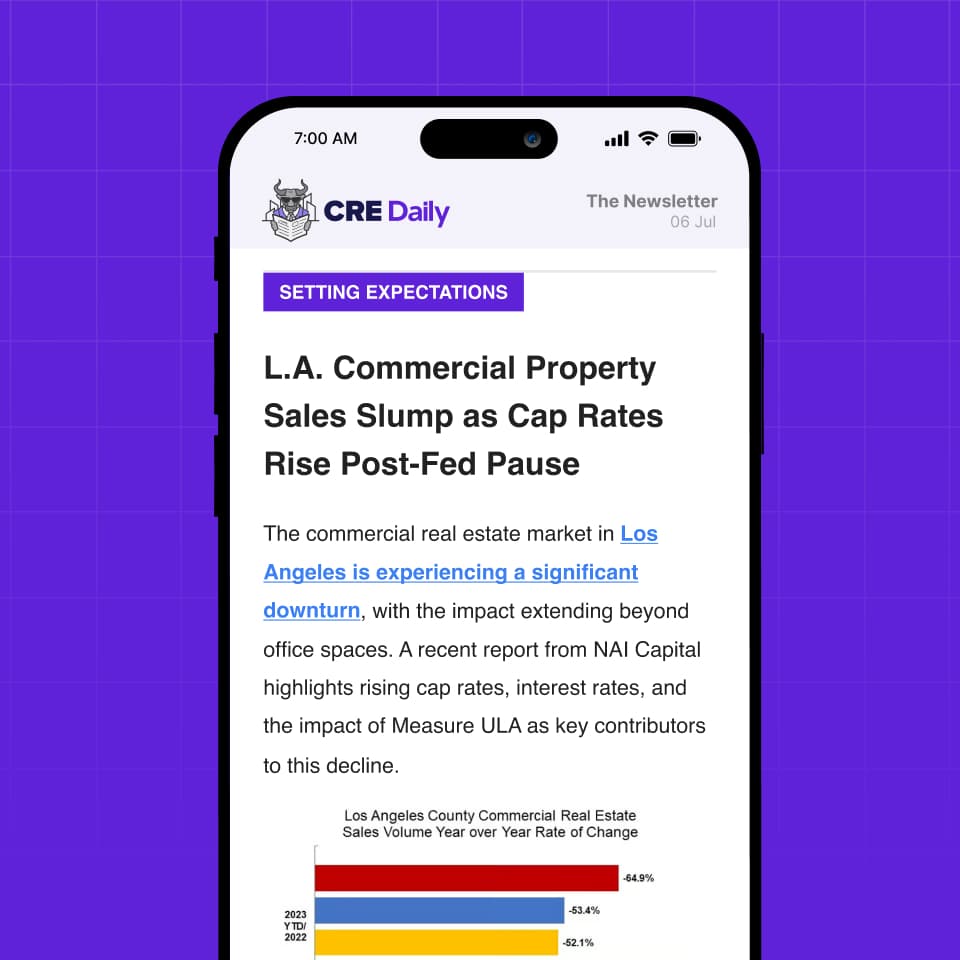- The Saving the American Dream Act would require five federal agencies to collaborate on a national strategy for affordable housing.
- A report outlining coordinated efforts, including data sharing, mortgage cost reduction, and regulatory reform, would be due within one year.
- The proposal reflects growing bipartisan interest in tackling housing challenges through more unified government action.
A Bipartisan Push For Coordination
Four members of the Congressional Real Estate Caucus are preparing to introduce legislation aimed at aligning federal efforts to improve housing affordability, reports Bisnow. The Saving the American Dream Act calls for a multi-agency approach to one of the nation’s most persistent economic challenges.
The legislation is co-sponsored by Representatives Mark Alford (R-MO), Tracey Mann (R-KS), Lou Correa (D-CA), and Brittany Pettersen (D-CO), who helped launch the caucus in 2024. It now includes over 50 members.
Get Smarter about what matters in CRE
Stay ahead of trends in commercial real estate with CRE Daily – the free newsletter delivering everything you need to start your day in just 5-minutes
What The Bill Proposes
If enacted, the legislation would require the heads of HUD, the Treasury, USDA, VA, and the FHFA to jointly produce a comprehensive report within 12 months. The report would outline ways to:
- Align housing finance initiatives across agencies
- Reduce construction and mortgage-related costs
- Ease local regulatory burdens
- Improve insurance access
- Provide targeted down payment assistance
- Coordinate disaster recovery planning
A central piece of the bill is the requirement to create a shared data infrastructure—allowing agencies to better identify and respond to housing needs using consistent, evidence-based insights.
Industry Voices Support
Housing industry groups, including the National Association of Homebuilders, Mortgage Bankers Association, and National Apartment Association, have endorsed the bill.
NAA CEO Bob Pinnegar emphasized the importance of interagency data coordination. He said it would help identify where housing shortages are most severe. It would also guide where development efforts should be focused.
Building On Broader Legislative Momentum
This bill comes shortly after a bipartisan effort in the Senate—the ROAD to Housing Act—which proposes easing local land-use restrictions to boost housing supply. Together, the two initiatives reflect an emerging consensus in Congress: meaningful progress on affordability requires systemic policy alignment.
Recent estimates show the US is short more than 7M homes for extremely low-income renters alone, underscoring the urgency behind these legislative efforts.
What’s Next
If passed, the Saving the American Dream Act could serve as a catalyst for longer-term federal collaboration on housing. The emphasis on joint planning and data transparency signals a shift toward more strategic and scalable solutions to the affordability crisis.
With housing pressures mounting in communities nationwide, momentum for federal intervention is clearly gaining ground.


















